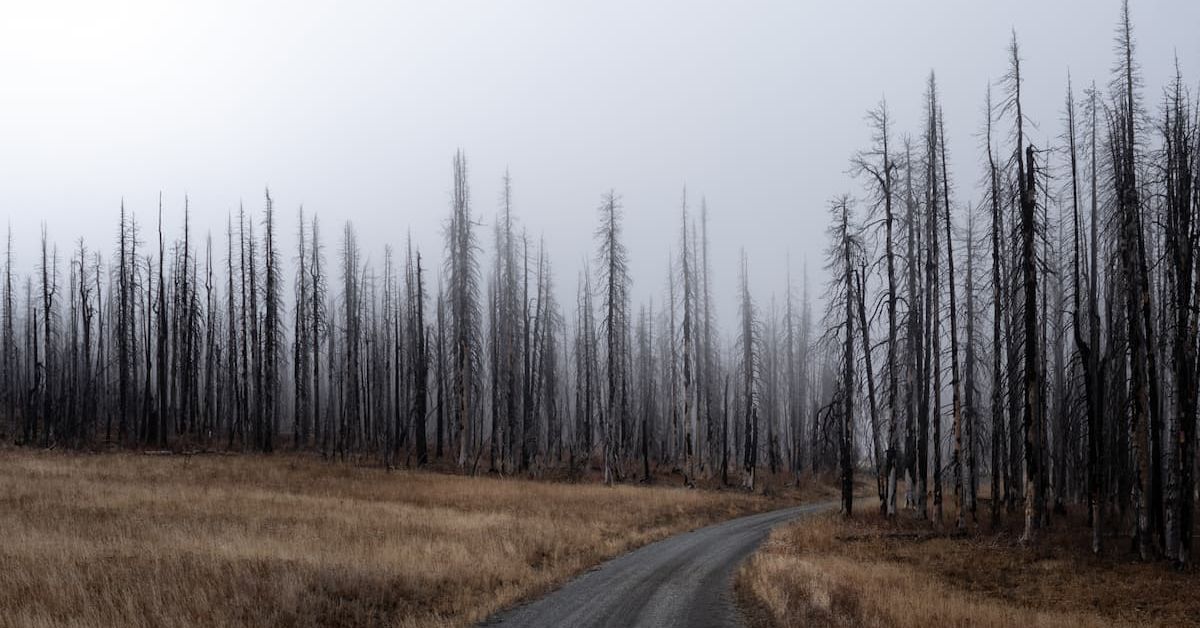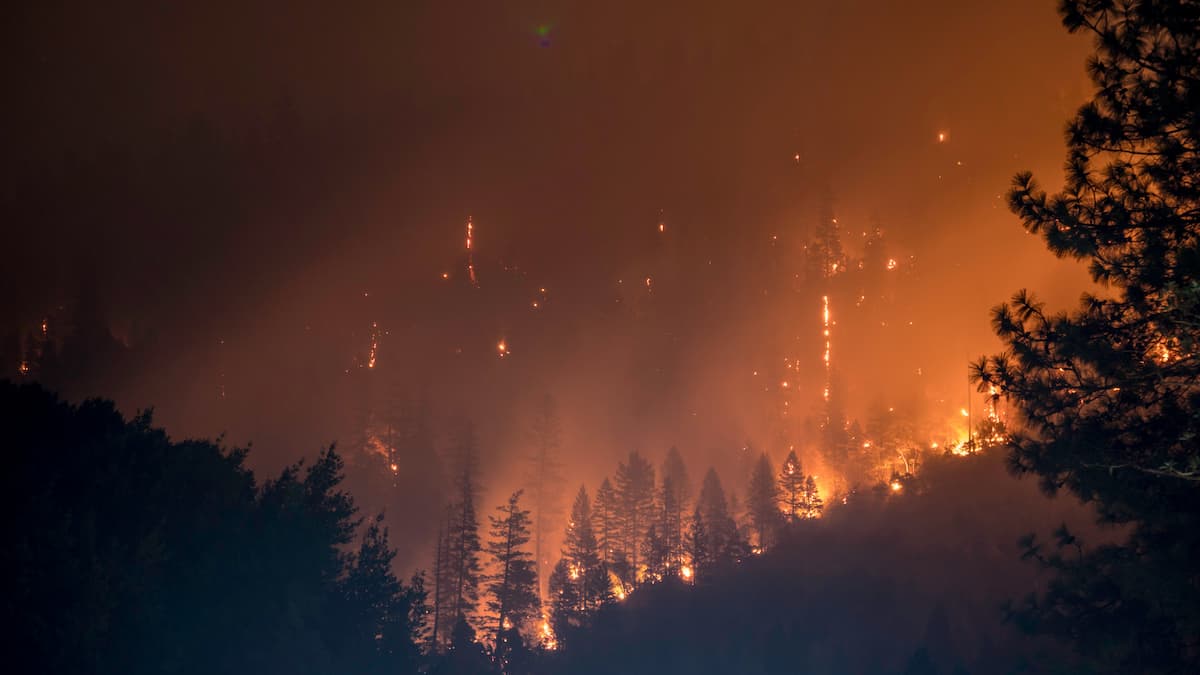
Why You Can’t Have a Fire During Fire Season in Stanley, Idaho
During the summer, the staff at Redfish Lake Visitor Center checks with the ranger station to identify the most recent fire hazard level for the Sawtooth region. Then, they transfer the information to their fire safety mascot, Blaze the Beaver (a friend of Smokey’s), posted in front of the Center to help notify the public and prevent human-caused wildfires.
In this article, we’ll share more about:
- When it is considered fire season in Stanley, Idaho
- Why you can’t have a fire during fire season
- What the penalties for having a fire during fire season are
- What the Redfish Lake Visitor Center’s role is in preventing wildfires
- How naturally-caused wildfires can be beneficial
- And additional resources regarding wildfires

What and When is Fire Season in Stanley, Idaho?
June through mid-October is referred to as “Fire Season” in many locations around the world. Stanley, Idaho is no exception. The four-month period marks the average start of the first fire and the end of the last. This is due to the lack of precipitation, the intensity of heat, wind movement, elevation, and dry vegetation creating the perfect conditions for human-caused and naturally-caused wildfires to ignite easily. The USDA Forest Service issues fire restrictions when conditions become extreme. Make sure you check the ranger district where you are traveling so you are prepared for the restrictions they may have in place.
What Are the Risks of Having a Campfire During An Extreme Fire Hazard Level?
According to the Forest Service website , an Extreme fire level indicates that fires start quickly and burn intensely with the potential to spread widely. They last for days and are difficult and dangerous to put out. By the time human-caused fires are finally extinguished, the costs are great: wildlife is misplaced, firefighters’ lives are risked, extensive resources have been spent, and precious time has been taken away from an already limited staff trying to manage naturally-caused fires. Someone has to pay for the damages, and that someone may be the person who started the fire.
What Are the Penalties For Violating a Fire Restriction Order or Starting A Wildfire?
The Idaho Firewise website states that:
Anyone starting a fire may be responsible for that fire until it is out. If your fire gets away, you can be held responsible and liable for any property damages and for fire suppression costs. In order to avoid costly fines and citations, make sure you know where and when burning is allowed.
For those caught violating fire restrictions, even if a wildfire does not start as a result, the Forest Service can seek the help of a Federal Magistrate judge to enforce up to a $5,000 penalty fee for individuals or a $10,000 penalty fee for a business. Criminal charges can also be pressed along with an up to a 6-month prison sentence (16 U.S.C. § 551; 18 U.S.C. §§ 3559, 3571, 3581).
What is the Redfish Lake Visitor Center, and How Is It Involved in Fire Prevention Education?
Operated by The Sawtooth Interpretive and Historical Association (SIHA) since 2011, the Redfish Lake Visitor Center and Gallery is open from mid-June through mid-September. Its mission is “To protect and advance the natural and cultural history of Idaho’s Sawtooth – Salmon River Country through preservation and education.” Along with Blaze the Beaver, the Redfish Lake Visitor Center/SIHA has adopted additional initiatives to help reduce the risk of human-caused fires.
Founded around education, the staff provides free daily educational programs on a variety of topics, including fire ecology, and travels to different trailheads to talk to backpackers and hikers in the area about fire safety. They help ensure recreationists are aware of the USDA Forest Service’s fire restrictions in the Sawtooth Wilderness and in the frontcountry, including that campfires:
- Have restriction levels in the frontcountry that change depending on the fire conditions.
- Should be avoided during certain hazard levels if a camp stove could be used instead.
- Must be made in a fire blanket or fire pan in Wilderness to prevent sterilizing the soil and disrupting the ecology.
- Are not allowed more than a quarter of a mile off-trail or near drainages during the summertime in the Wilderness.
- Are not allowed within 200 feet of certain lakes in the Wilderness year-round.
- Should only be made from dead and downed trees.
The Redfish Lake Visitor Center works in collaboration with Sawtooth NRA staff, Sawtooth Society , and other nonprofit partners to reduce the risk of human-caused wildfires, one of the greatest threats to the Sawtooth National Recreation Area (SNRA).

How Naturally-Caused Wildfires Can Be Beneficial to the SNRA
The reason for fire restrictions is not to stop all wildfires, but to reduce human-caused fires. Naturally-caused wildfires are a part of the ecosystem of our western landscape. They help to clear old lodgepole pines, understory, and other debris that crowd out sunlight from reaching the ground. Certain species even thrive after naturally-caused wildfires. For instance, Black-backed woodpeckers forage burned trees to find beetles and hollow out decaying trees for their homes, morels flourish in the newly enriched soil, and lodgepole serotinous cones can only germinate after a fire. So, when mother nature utilizes fire to clear out old trees that have beetles, are no longer growing, or are too dense, a blank canvas is created for newer, healthier vegetation to grow.
How Can You Help Prevent Wildfires in the Sawtooth National Recreation Area?
Kirk Flannigan, Area Manager of the Sawtooth National Recreation Area, says one of the top things he’d like recreationists to do to help preserve the SNRA would be to learn more about being firewise. “In 2020, when there was an explosion in use, we found over 300 abandoned fires. We need people to understand what it means to be dead out.” It’s necessary to drown a fire in water and stir it with a stick until the fire is no longer smoking or steaming, no embers are present, and it is cool to the touch (that means feeling it with your hand!).
In addition to never abandoning a live campfire, you should follow the fire restrictions associated with fire hazard levels, take fire safety seriously and recreate responsibly. Elizabeth Wharton, acting public affairs officer for the Sawtooth National Forest, also shares these tips:
- Avoid target shooting on hot, dry, windy days.
- Check chains and tire conditions before you leave.
- Do not light fireworks or things made to explode on public lands.
Fire Season and Fire Restriction Resources
For more information about the fire season in Stanley, Idaho, or on how to be firewise, check out the following resources:
Forest Service USDA / Ranger Stations
- Check-in with the ranger station overseeing the area you’ll be visiting. You can visit them in person, reference their website fs.usda.gov , or call (208) 774-3000.
- Visit fs.usda.gov to determine if restrictions are in place in Region 4.
Fire and Smoke Report
- Visit fire.airnow.gov to see a real-time map showing particulate matter, air quality, and recommendations if you should stay indoors or can safely enjoy outdoor air.
Redfish Lake Visitor Center & Gallery
- Drop by the Center daily from mid-June through mid-September between 9:30 am - 5 p.m. It is located on Redfish Lake above the dog beach and is just a short walk from Redfish Lake Lodge.
- Reference their website discoversawtooth.org , or call 208-774-3376 during open hours in the summer.
Idaho Department of Lands - Restriction Finder
- Visit idl.idaho.gov to discover a real-time map of fire restrictions across the State of Idaho.
The Wildland Fire Assessment System (WFAS)
- Visit wfas.net/ to see a graphical depiction of fire danger across the entire US
Being firewise and following fire restrictions helps to preserve the history of the Sawtooth National Recreation Area (SNRA) and the city of Stanley, Idaho as well as the ability to recreate within. Let’s all do our part to stay informed and follow the restrictions so that we have a fantastic summer with fewer fires and a beautiful environment to enjoy for years to come.
Written by: Amber Hawton-Hill